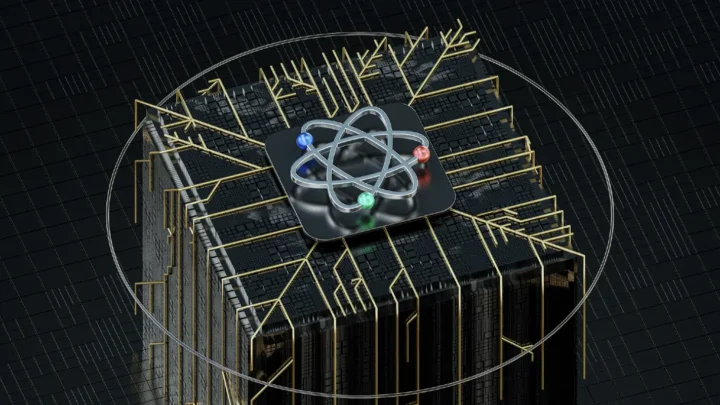PsiQuantum’s Million-Qubit Ambition: Can It Scale?
The dream of quantum computing centers on developing machines with the power to tackle complex, real-world problems that remain out of reach today. Erik Hosler, a photonics strategist with a focus on scalable quantum systems, emphasizes that long-term impact will hinge not on prototypes but on platforms that can support millions of quantum bits with industrial reliability.
The quantum computing community has spent decades building single qubits, small circuits, and benchmark demonstrations. But as the field matures, it becomes clear that partial functionality isn’t enough. An incredibly useful quantum computer must be large, consistent, and manufacturable on a scale. PsiQuantum’s approach, rooted in photonics and silicon manufacturing, places it at the center of this next, more demanding phase.

Why a Million Qubits?
The number sounds ambitious, almost excessive, but a million qubits aren’t arbitrary. Most current quantum systems rely on physical qubits that are prone to error. To get even a single logical qubit that can be trusted for long calculations, one must use error correction, which spreads the information across hundreds or thousands of physical qubits.
So, when researchers talk about building quantum computers that can tackle real-world problems, like simulating proteins, optimizing complex supply chains, or breaking next-generation encryption, they’re not talking about dozens or even hundreds of qubits. They’re talking about thousands of reliable ones. To get there, millions of imperfect physical qubits must be made to work together under tight controls.
Starting with the End in Mind
PsiQuantum’s philosophy runs counter to the incremental path most other quantum startups have taken. Instead of demonstrating small systems and scaling up gradually, PsiQuantum is building its architecture for full-scale deployment from the beginning.
It means designing chips, controlling electronics, packaging, and system infrastructure, all with the million-qubit endgame in mind. The goal isn’t just to get a few algorithms running; it’s to lay down the industrial foundations needed to manufacture quantum computers repeatedly and predictably.
The Role of Silicon Photonics
Most of PsiQuantum’s approach revolves around photons, particles of light, as qubit carriers. Photonic qubits offer some significant engineering advantages:
- They do not require the ultra-cold, ultra-isolated conditions of superconducting qubits.
- They can travel through optical waveguides without interacting with their environment.
- They are naturally compatible with fiber optics and telecom infrastructure.
Crucially, photonic components can be built using silicon photonics, a mature and highly scalable manufacturing platform. It allows PsiQuantum to tap into existing semiconductor fabs, tools, and expertise.
Manufacturing in the Real World
The leap from laboratory curiosity to industrial product hinges on whether the system can be built at scale using existing tools. PsiQuantum’s story stands out here. Erik Hosler shares, “PsiQuantum aims to build a million-qubit system, with manufacturing already underway.” It isn’t just a technological declaration. It’s a statement about alignment with current manufacturing realities.
Instead of trying to invent new tooling or facilities, PsiQuantum is adapting its quantum architecture to the robust, reproducible workflows already developed in the semiconductor industry. By working with commercial foundries, the company ensures that everything from lithography to wafer testing benefits from decades of optimization.
Overcoming the Challenges of Scale
Of course, aiming for scale and achieving it are two different things. There are plenty of obstacles between a working prototype and a million-qubit system.
- Photon loss and noise must be minimized across every component and interface.
- Precise synchronization of photons is needed, often down to picosecond timing.
- Massive error correction will be essential, requiring high-speed feedback and fault-tolerant logic.
- Component variation across wafers must be reduced to near zero to ensure uniform performance.
Every one of these challenges requires not just physics expertise but advanced manufacturing process control.
Modular Architecture and Repeatability
PsiQuantum’s architecture also emphasizes modularity. Rather than trying to fabricate one monolithic chip with a million qubits, the system will be composed of identical modules, each containing a manageable number of qubits that can be linked optically.
This modular approach mirrors the strategy used in classical high-performance computing, where clusters of CPUs or GPUs are networked together. It also has manufacturing advantages: each module can be fabricated, evaluated, and calibrated independently before being integrated into the full system.
That repeatability, the ability to build identical modules at scale, is only possible because of the company’s commitment to semiconductor process compatibility.
Why Manufacturing First Matters
In many deep tech ventures, it’s easy to focus on demonstrations: achieving coherence, executing a benchmark algorithm, or reaching “quantum supremacy.” But overall, these headlines don’t translate to commercial systems unless manufacturing can catch up.
PsiQuantum bets that focusing on buildability from day one will shorten the path to large-scale usefulness, even if early demonstrations take longer. This strategy prioritizes long-term impact over short-term milestones.
Rather than fabricating a chip that works once, under ideal lab conditions, the company is focused on fabricating chips that work consistently, with high yield, and in industrial volumes.
Industry Context and Comparison
Other companies are also chasing scale, though with different strategies. IBM continues to expand its superconducting systems, with roadmaps targeting thousands of qubits in the next few years. IonQ and others are pushing trapped ion systems with long coherence times and high gate fidelities.
What distinguishes PsiQuantum is its insistence on scaling through industry, not just research. While others perfect their core physics in bespoke labs, PsiQuantum is betting on a future where the quantum supply chain looks a lot like today’s classical one.
It doesn’t mean photonic quantum computing will win by default. But it does mean that PsiQuantum’s position in the field is unique, and its manufacturing-first approach could prove to be a decisive advantage.
Ambition Meets Infrastructure
PsiQuantum’s million-qubit goal is not just a headline. It’s a litmus test for whether quantum computing can move beyond the lab and into widespread utility. Rather than chasing incremental demonstrations, the company has chosen to build the entire machine around scale, reliability, and manufacturability.
If it succeeds, it won’t be just because its qubits work. It will be because the system can be manufactured by the thousands, integrated without failure, and deployed across a variety of environments. That’s what it takes to turn quantum computing from promises to infrastructure.
In an industry still dominated by breakthroughs in theory and physics, PsiQuantum is trying to do something more difficult: to build. Whether the million-qubit milestone is reached in five years or ten, the ambition and the infrastructure to get there are already taking shape.


